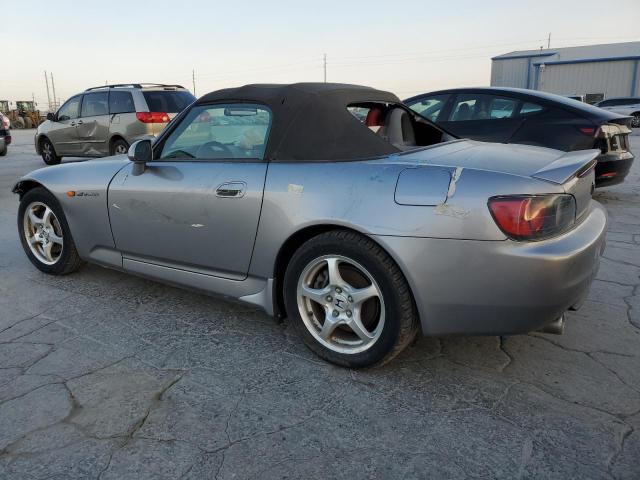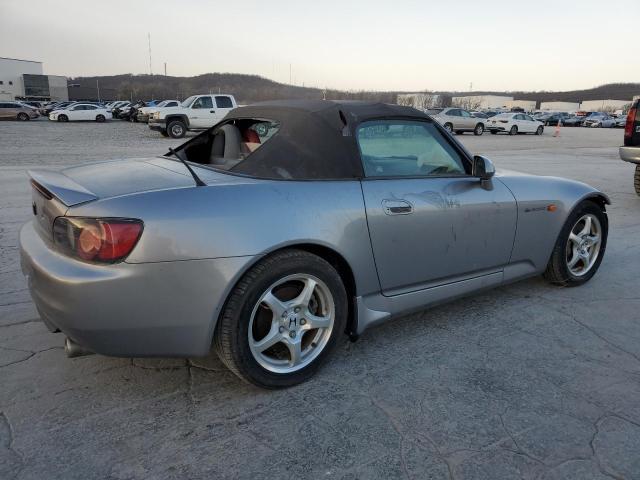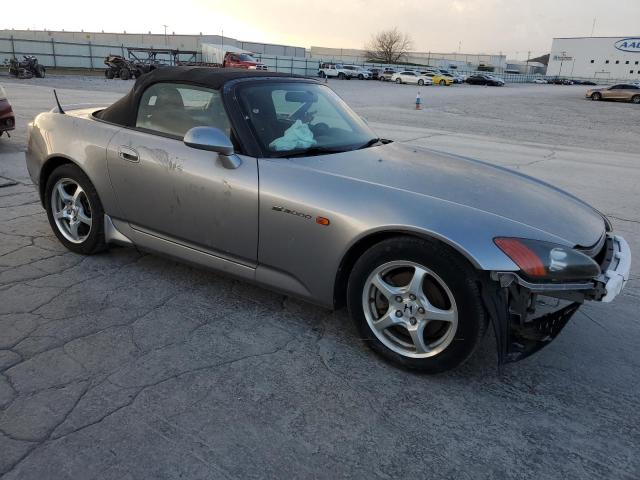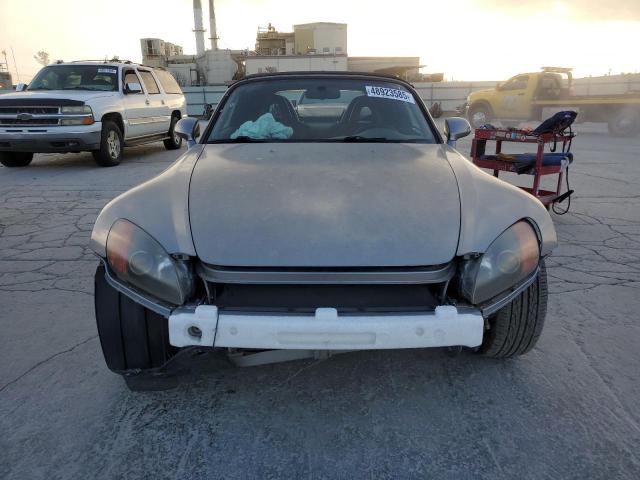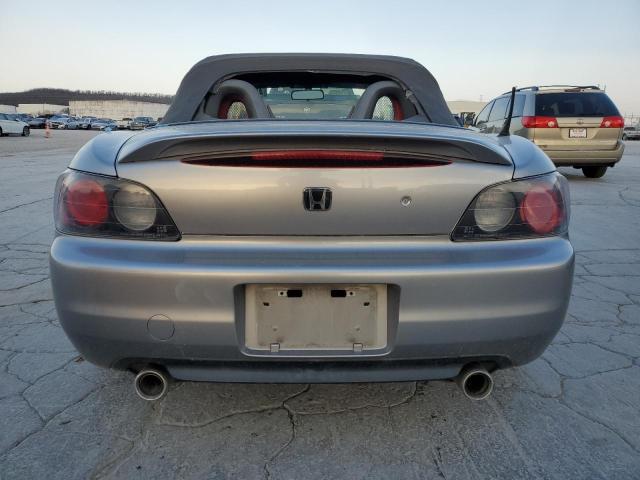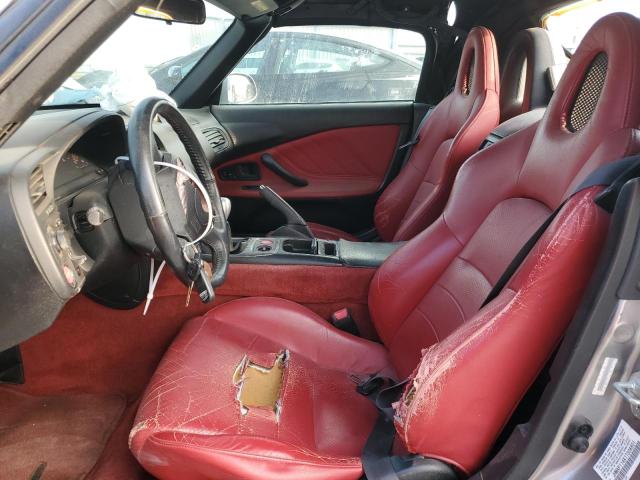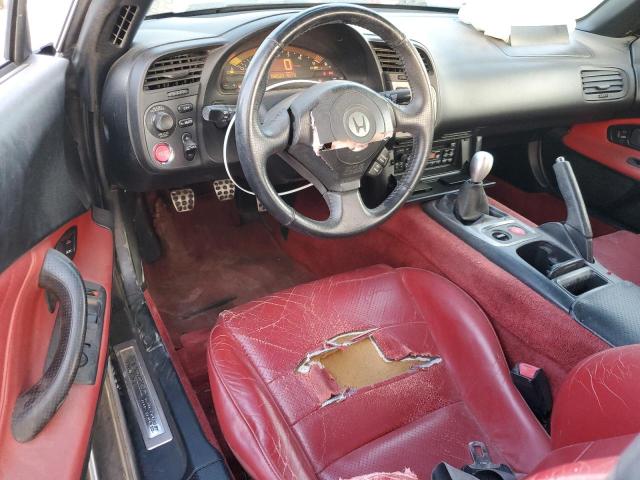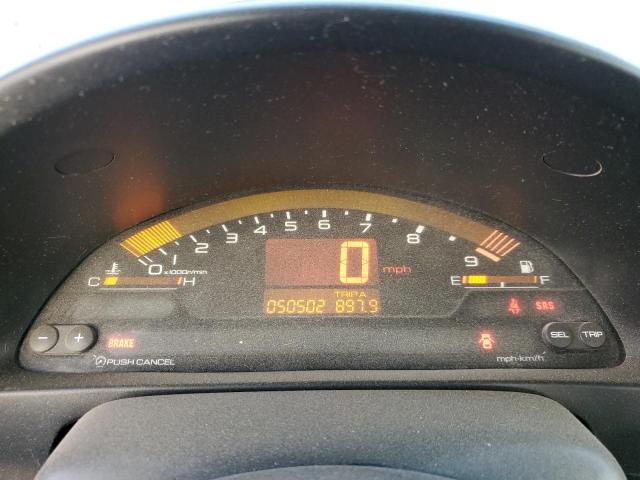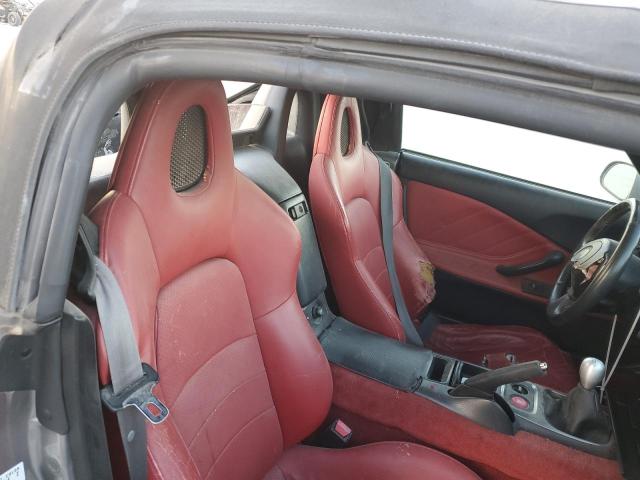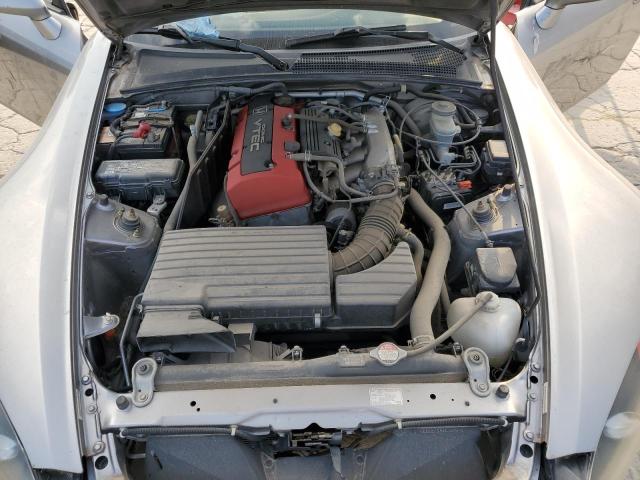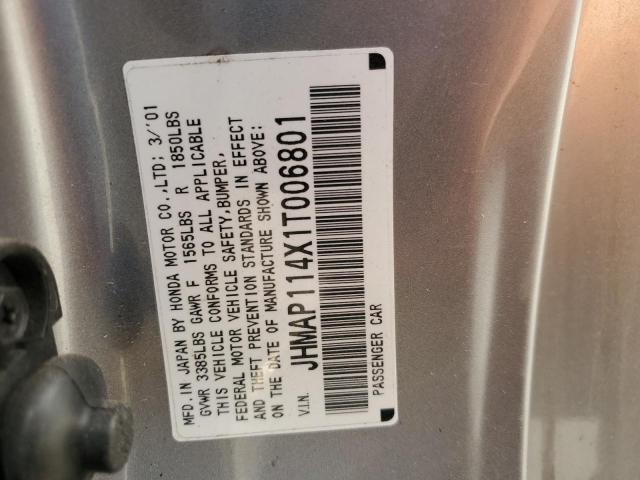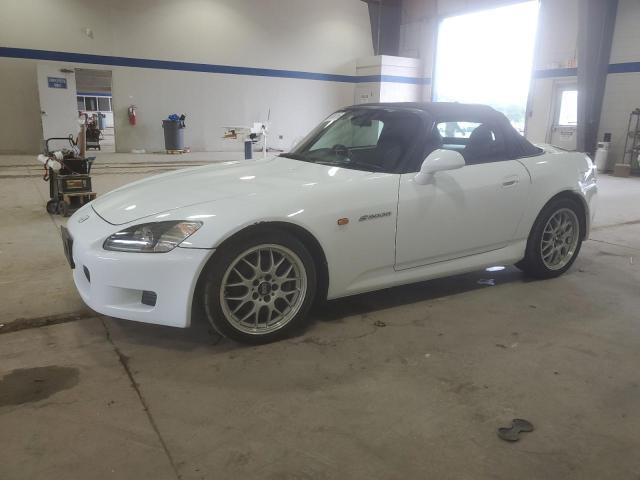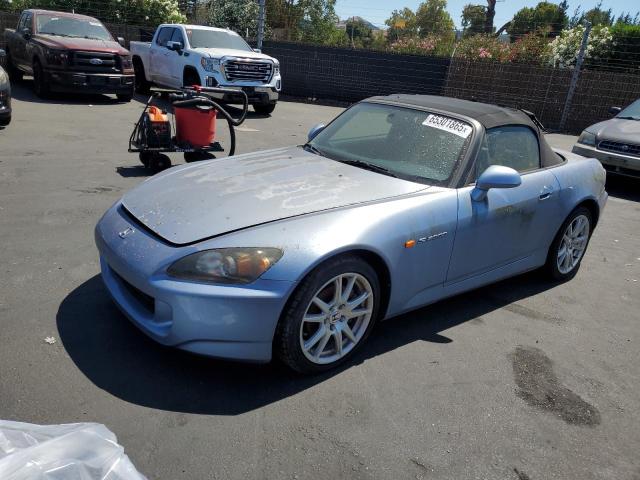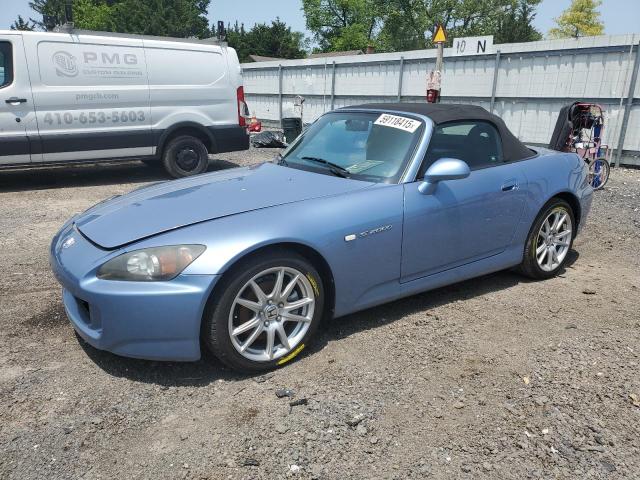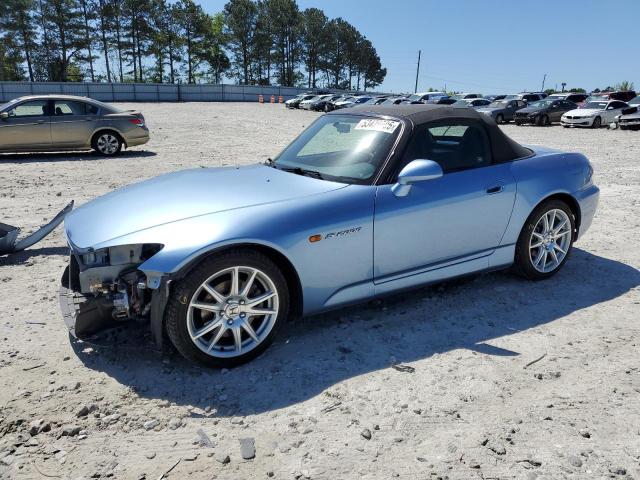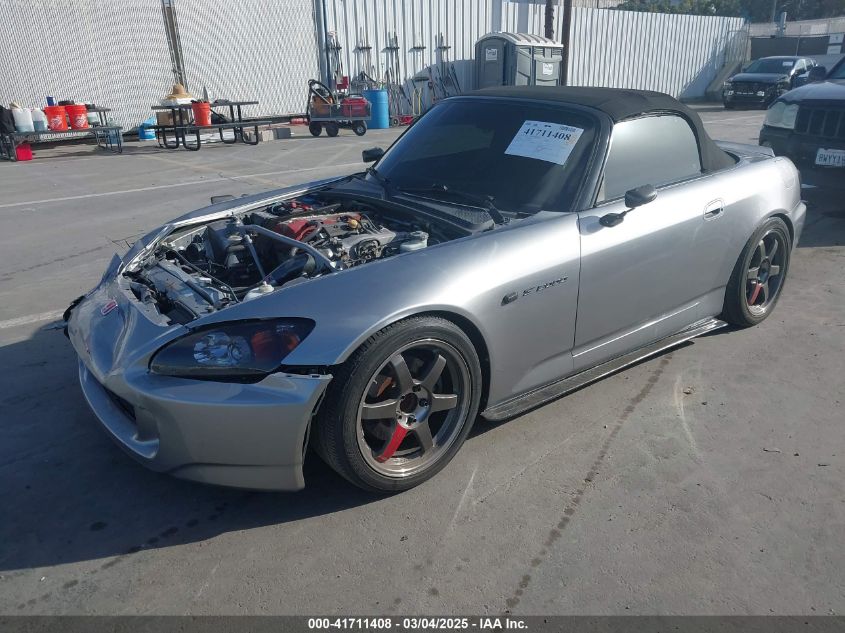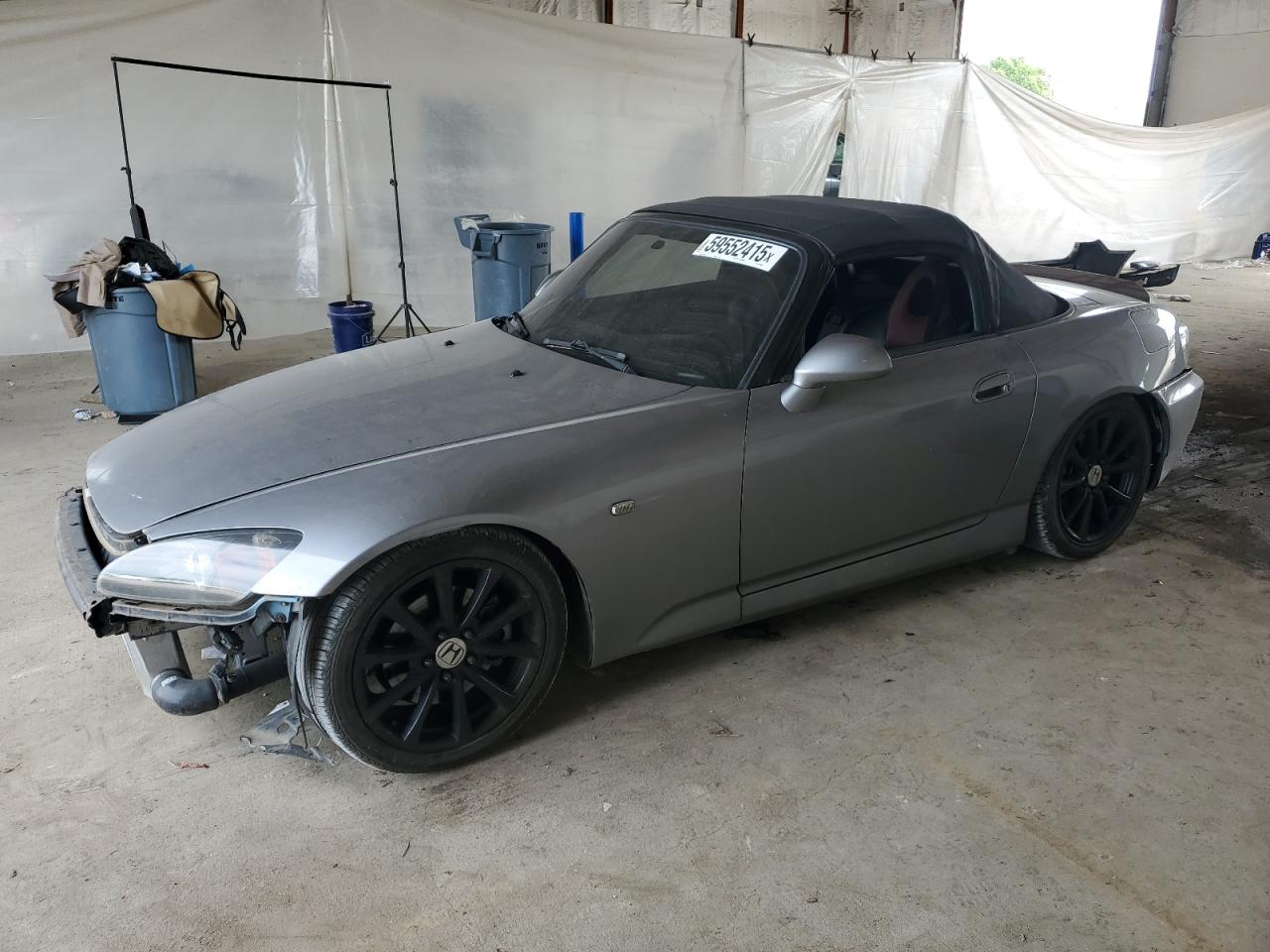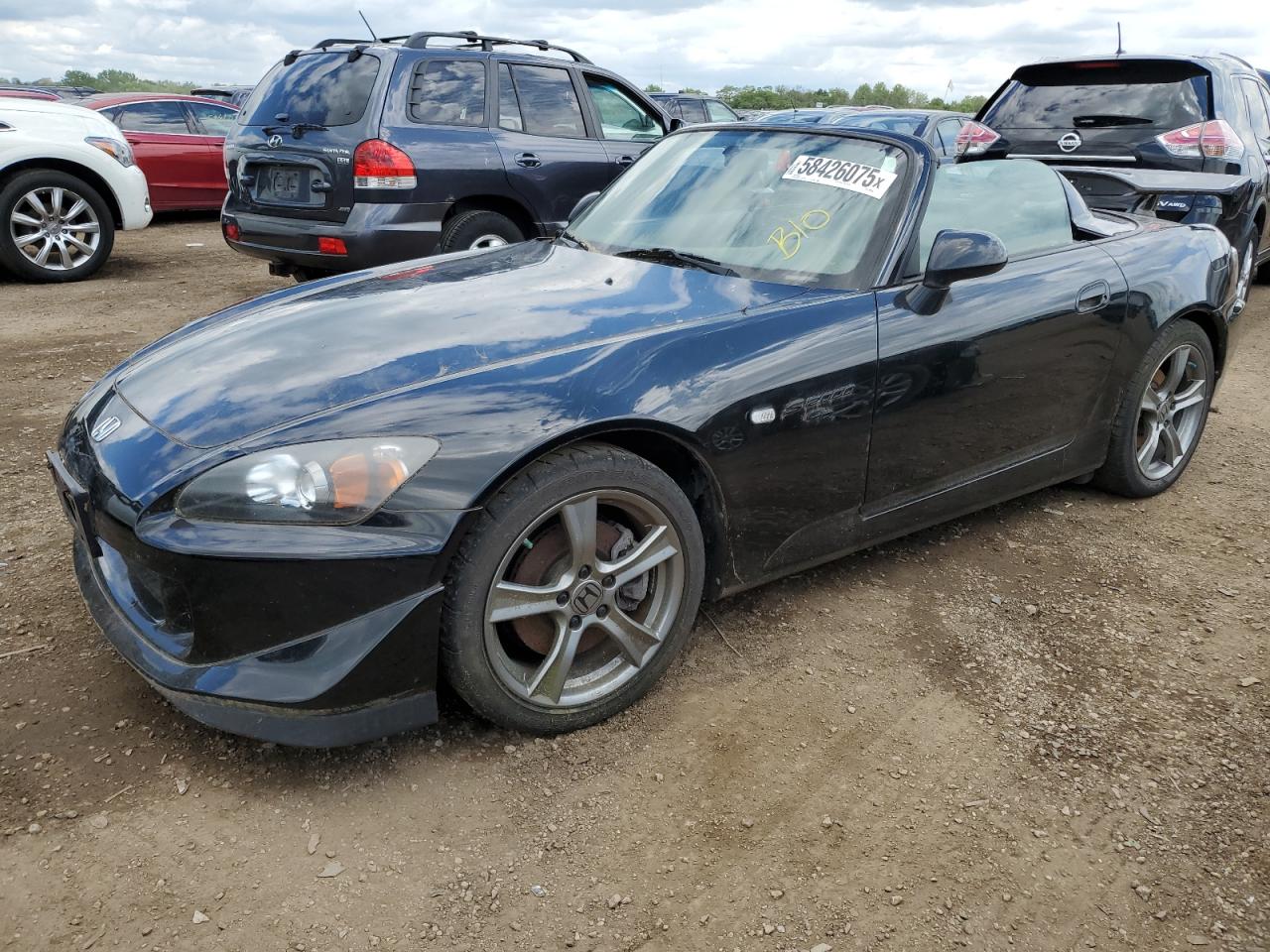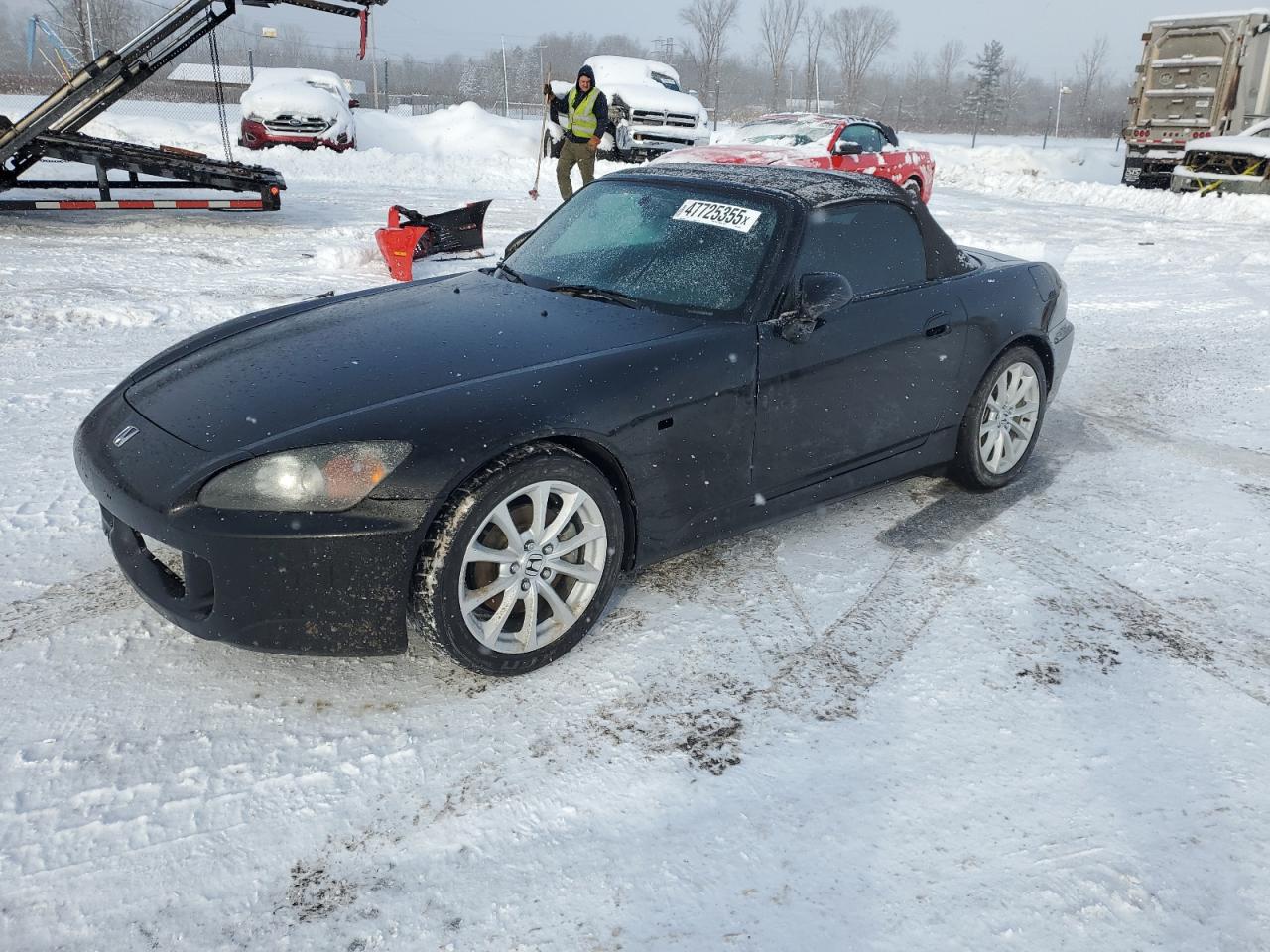2001 HONDA S2000 | JHMAP114X1T006801
 ❯
❯Lot details
- Sale Date2025-06-11
- Lot Number48923585
- ACV27205 $
- Sale documentOK - CERT OF TITLE-SALVAGE
- LocationOK - TULSA
- Odometer50,502 miles (81,275 km)
- Primary DamageFRONT END
Vehicle specifications
2
~$40,000
Engine: 2.2L naturally aspirated I4
Torque: 220 Nm
0–100 km/h: ~5.7 s
The Honda S2000 is one of the most celebrated roadsters of its era, renowned for its thrilling high-revving engine and razor-sharp dynamics. In its original AP1 form (1999–2003), the 2.0L inline-four F20C produced 240 hp at a screaming 8,300 rpm — a record-setting specific output for a naturally aspirated engine at the time. Later AP2 versions for the U.S. market (2004–2009) saw a switch to the 2.2L F22C1, which offered more torque (220 Nm) and slightly improved drivability at lower revs, while preserving the car’s signature urgency. With a 0–100 km/h time of around 5.7 seconds and a perfectly balanced rear-wheel-drive layout, the S2000 provided visceral, uninterrupted performance in a compact, agile package.
Cornering is where the S2000 shines brightest. With a 50:50 weight distribution, independent double wishbone suspension front and rear, and one of the most communicative steering systems of its time, it responds to driver input with precision and immediacy. The AP2 generation added revised suspension geometry and improved stability during aggressive cornering, without dulling the car’s feedback. Its low-slung stance, stiff chassis, and short wheelbase allowed rapid transitions and near-telepathic handling — especially in dry conditions, where skilled drivers could fully exploit its potential.
The S2000 was conceived not just as a sports car, but as a statement: a spiritual successor to Honda's racing roadsters of the 1960s. It combines engineering purity with technical sophistication, delivering an experience that’s mechanical, analog, and emotionally engaging. Compared to the Mazda MX-5 Miata, it is sharper and more powerful; compared to the Porsche Boxster, it offers similar performance for a fraction of the cost. It’s a modern classic that embodies the golden age of Japanese engineering.
Final Bid Honda S2000 (2001)
$11,100
$11,100
$11,100
Body Styles
The Honda S2000 is a two-door, two-seat roadster with a soft-top convertible roof and a front-engine, rear-wheel-drive layout. Its proportions are sleek and athletic, with a long hood, short rear deck, and a cab-rearward stance that evokes classic sports cars. The body sits low to the ground, emphasizing its performance intent and low center of gravity. The fenders are subtly flared to house wide tires, and the front fascia features minimalist intakes and projector headlights. The rear end is tight and purposeful, with twin exhausts and sharp, triangular taillights. With an overall length of around 4.1 meters and a curb weight under 1,300 kg, the S2000 is compact, focused, and unmistakably driver-oriented.
Model Name Meaning (Manufacturer)
The name “S2000” reflects both the car’s engine displacement and its place in Honda’s history. “S” refers to the S-series roadsters of the 1960s (like the S600 and S800), while “2000” indicates the 2.0-liter engine that powered the original AP1. It was launched to mark the company’s 50th anniversary, symbolizing a return to enthusiast-focused design and a celebration of Honda’s motorsport heritage.
Body & Interior Colors and Rims
The S2000 was offered in a variety of vibrant and sophisticated exterior finishes, including Sebring Silver, Spa Yellow, Suzuka Blue, New Formula Red, Berlina Black, and Grand Prix White. Later AP2 models added Laguna Blue Pearl, Rio Yellow Pearl, and Silverstone Metallic, among others. Special editions, like the Club Racer (CR), included exclusive aero features and colors such as Apex Blue Pearl. Paint quality was high, with deep clearcoats enhancing the car’s sculpted body lines.
Inside, the cabin was minimalist and entirely focused on the driver. Signature elements included digital instrumentation with a racing-style tachometer, red push-button start, and heavily bolstered bucket seats trimmed in leather. Interior colors typically included black, red/black, or tan/black combinations depending on model year and market. The AP2 introduced minor trim upgrades, improved sound insulation, and softer materials while retaining the same purposeful layout.
Standard wheels were 16-inch five-spoke alloys on early AP1 models, later upgraded to 17-inch alloys on the AP2 with wider tires. The designs were lightweight, clean, and often finished in silver or gunmetal. The CR model added lightweight Enkei wheels with track-ready rubber. The overall stance was tight and confident, with wheels pushed far into the corners and minimal wheel gap.
Top Expensive Options
- CR (Club Racer) Aero Package with Hardtop: $5,000
- Exclusive Enkei Lightweight 17-inch Wheels (CR): $1,600
- OEM Red and Black Leather Interior Package: $1,200
- Carbon Fiber Rear Spoiler (aftermarket or optional): $1,000
- Mugen Titanium Exhaust System: $2,200
- Front Lip Spoiler and Rear Diffuser Kit: $950
- Alpine Premium Audio with Integrated Navigation: $1,400
- OEM Hardtop with Defroster and Latch Kit: $3,200
- Limited-Slip Differential with Upgraded Gearing (track spec): $1,300
- Custom-Fitted Tonneau Cover and Wind Deflector Kit: $600
vs Competitors
Against contemporaries like the Mazda MX-5, Porsche Boxster, BMW Z4, and Nissan 350Z Roadster, the S2000 offered a uniquely visceral, high-revving driving experience. It outpaced the MX-5 in power and sharpness, offered a more analog experience than the Boxster, and delivered better handling balance and drivetrain purity than the heavier Z4 and 350Z. While it lacked the plush interior of premium European roadsters, it made up for it with extraordinary build quality, bulletproof reliability, and a chassis that responded like a race-tuned instrument. The S2000 was never about comfort — it was about precision, connection, and fun at the edge of grip. Even today, few cars replicate its purity and sense of occasion.
Fun Fact
The S2000’s F20C engine held the record for the highest specific output of any naturally aspirated production engine for over a decade — delivering 120 hp per liter without forced induction. This feat was achieved with Formula 1-inspired technologies like forged pistons, a ladder-frame block, VTEC, and an 8,900 rpm redline (9,000 rpm cutoff). Enthusiasts still consider the engine a mechanical masterpiece, and the car as one of the finest analog sports cars ever built.



